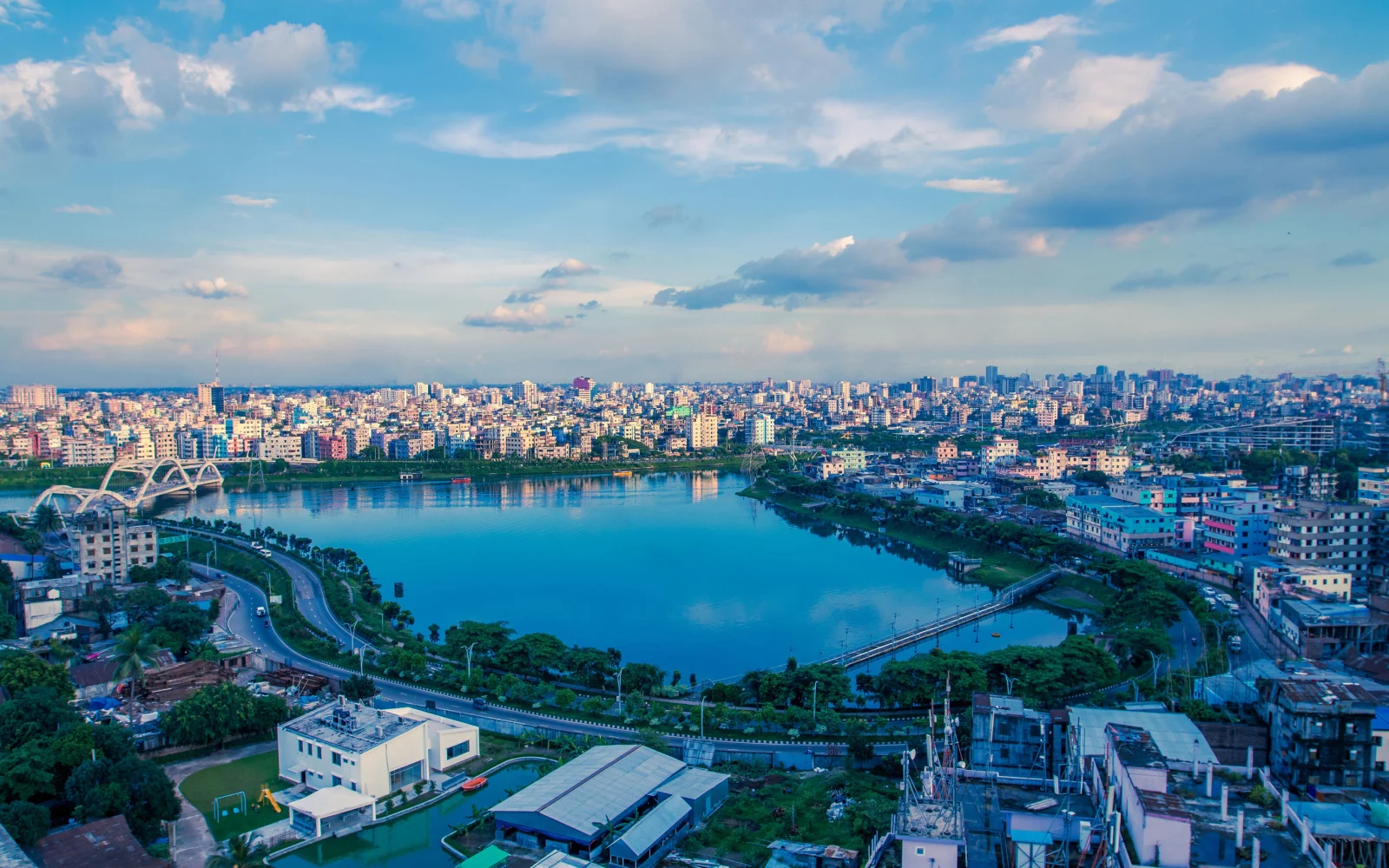What's the best time to visit Bangladesh?
The best time to visit Bangladesh is from November to March, which falls during the cooler dry season, making it perfect for festivals, jungle adventures, beach outings, and sightseeing. The temperatures vary from warm in November to cooler in January, then warming up in February. Just know that this is peak tourist season, so book early.
Spices and sweets, colorful tribal culture, lush jungles, sunny beaches, and fertile plains interrupted by rolling hills make Bangladesh truly special to visit. But what’s the best time to visit?
We’ll show you the right time to visit for the peak experience, a more budget-friendly trip, and fewer crowds. You’ll also see the worst time to visit to avoid the heavy rains of the monsoon season. Keep reading to get inspired for your visit to Bangladesh!
The Overall Best Time to Visit Bangladesh
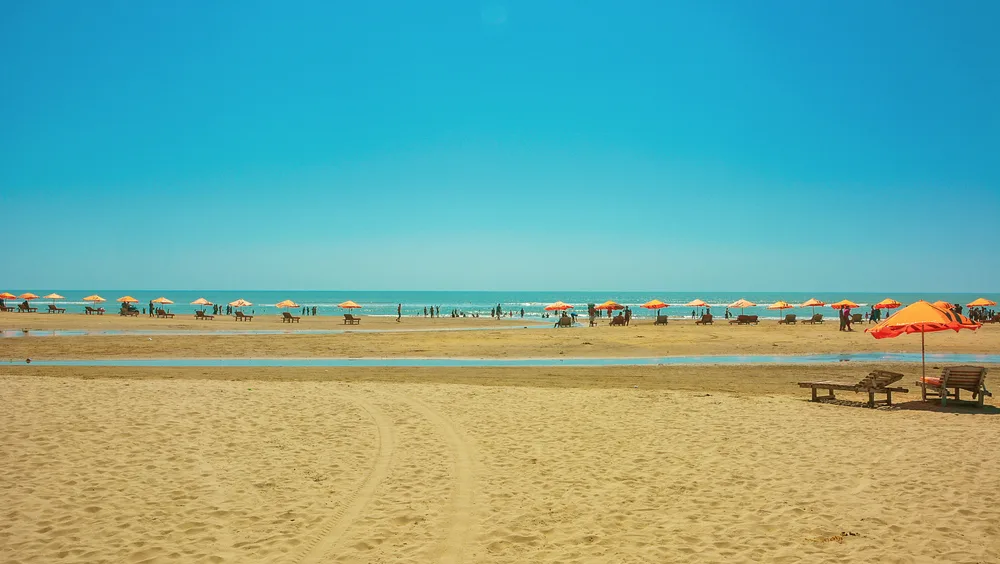
Tanix Bd/Shutterstock
The best time to visit Bangladesh is November through March during the cooler dry season. During this time, you can go to festivals, explore the jungles, hit the beach, and go sightseeing.
Bangladesh is nice and dry during this period, making it absolutely ideal for tourists. The temperatures are warmest in November (86F) and cool down a bit in January (73F), which is the “coldest” month.
Things heat back up around February, with daily highs once again reaching the 80s with lows in the 60s. The November-March period is just after the heavy monsoon season that tapers off in October. As a result, everything is vibrant, lush, and green during this season.
With the cooler temperatures, people are out in full force enjoying festivals and celebrations that won’t get rained out or deal with sweltering heat.
It’s the best time to relax or play on a Bangladesh beach, head into the jungly mangrove forest, walk city streets and markets, or go sightseeing around the many palaces, museums, and religious sites here.
Since it’s genuinely the best time to visit, this season is no secret to Bangladesh tourists. It’s the peak tourism season and things can get crowded in popular destinations like Cox’s Bazar, the capital Dhaka, and Saint Martin’s Island.
Hotel prices also hit their peak, but are still extremely affordable. Here’s a look at how much you can expect to pay for a room during this period according to Google Hotels:
- November: $17-$45/night
- December: $18-$46/night
- January: $17-$44/night
- February: $16-$43/night
- March: $16-$42/night
Affordable accommodations, lots to see and do, and ideal cooler, dry weather make November to March the best time to visit overall.
Cheapest Time to Visit Bangladesh
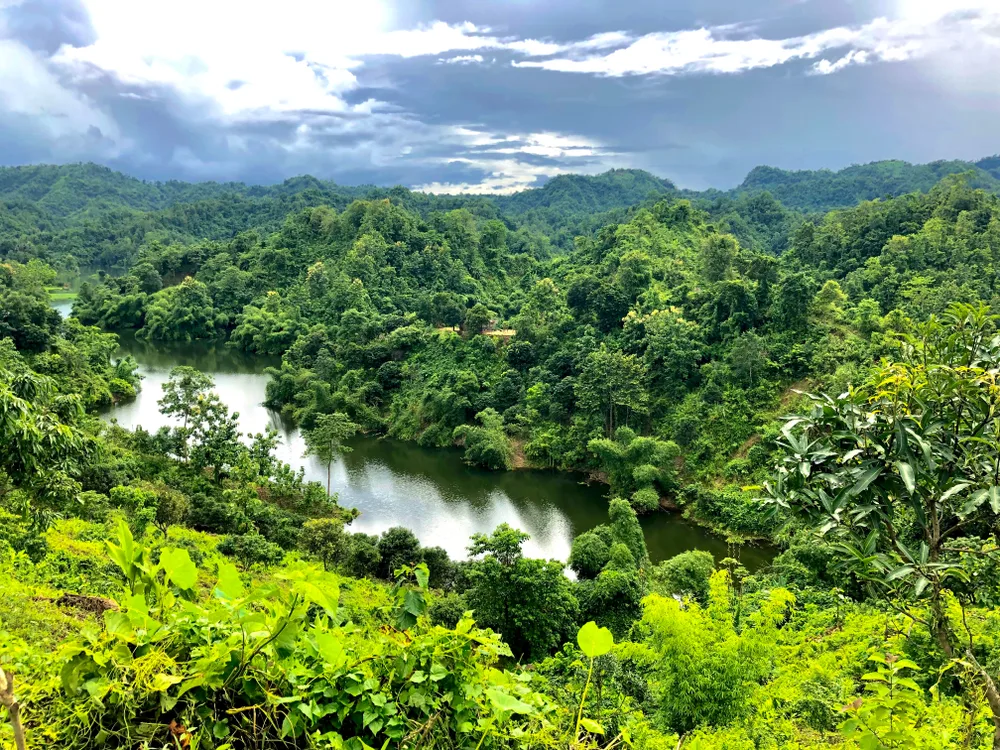
AbdulR/Shutterstock
The cheapest time to visit Bangladesh is from April to June, when temperatures heat up, humidity and rainfall increases, and the monsoon season arrives in late May.
April, May, and June are normally the hottest months of the year in Bangladesh, with highs reaching 92F-95F in April, 92F-94F in May, and 90F in June.
The warmer temperatures combined with rising humidity and rainfall are some of the reasons April, May, and June are the cheapest months to visit. It’s usually cooler along the southern coast during this time of year.
Northwesters, or thunderstorms from the Himalayas, start bringing rain and windy conditions in April. The true monsoon season arrives sometime between late May and June. This is when the heavy rainfall begins and tropical cyclones become a concern.
Monthly rainfall totals rapidly increase between April and May before peaking in June and July. Monthly totals can reach 13+ inches in Dhaka and 23+ inches in Chittagong by the time June arrives.
So while April to June are the cheapest months to visit Bangladesh, you’re better off planning to visit in April to enjoy drier conditions before the real monsoon season takes hold. Hotel room prices drop slightly during this wet and humid period, but the cost difference is negligible.
Here’s a look at average nightly rates from April to June in Bangladesh:
- April: $15-$39/night
- May: $16-$42/night
- June: $16-$43/night
Compared to the peak season, when rooms cost between $16 and $46 per night, you might find that it’s not worth it to come during the rainier April-June season to save a few dollars per night.
Least Busy Time to Visit Bangladesh
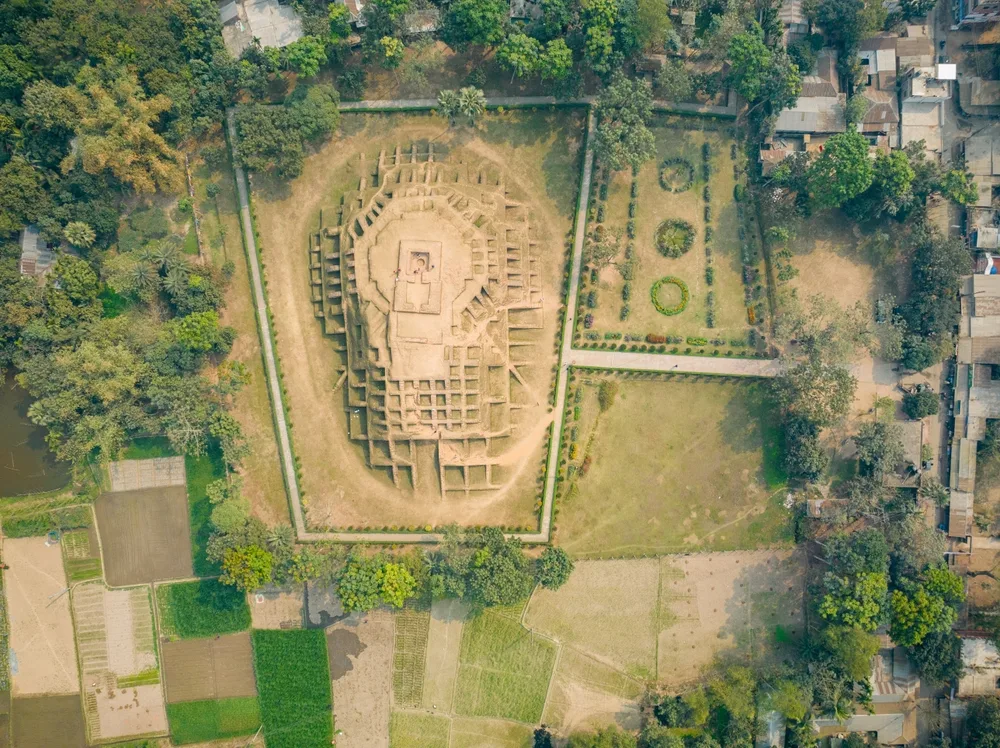
H.M. Fozla Rabby/Shutterstock
The least busy time to visit Bangladesh is from September to November. During this time, you’ll experience a large part of the rainy and humid monsoon season that tourists avoid.
The monsoon season in Bangladesh runs from late May/June through October. It’s very rainy and humid during this period. September and October see the weaker part of the monsoon season, with November bringing much better weather.
The less-than-ideal weather from September to the beginning of November keep many tourists away. As a result, you can expect smaller crowds, more hotel and flight availability, and cheaper prices on flights (especially in October, the cheapest month to fly to Bangladesh).
Temperatures continually cool down through this fall season, with highs moving from 89F in September to 88F in October and 84F in November.
Rainfall totals also decrease steadily with each month receiving about half the rain of the previous month. For example, Dhaka sees 7.1″ in September, 3.9″ in October, and 1″ in November.
Humidity can make the normally-pleasant temperatures feel much hotter and more uncomfortable for outdoor activities. You can expect around 80% humidity during this time, but August sees the peak humidity (83%).
Hotel room prices are slightly higher than the cheapest time to visit during this slower tourism season, but the difference doesn’t amount to much.
Here’s a look at the average rates per night from September to November:
- September: $17-$44/night
- October: $17-$44/night
- November: $17-$45/night
Planning your visit for the month of November is the best choice if you want to visit during the least busy period. This is when rainfall tapers off, humidity begins to fall, and temperatures are nice and cool.
Worst Time to Visit Bangladesh
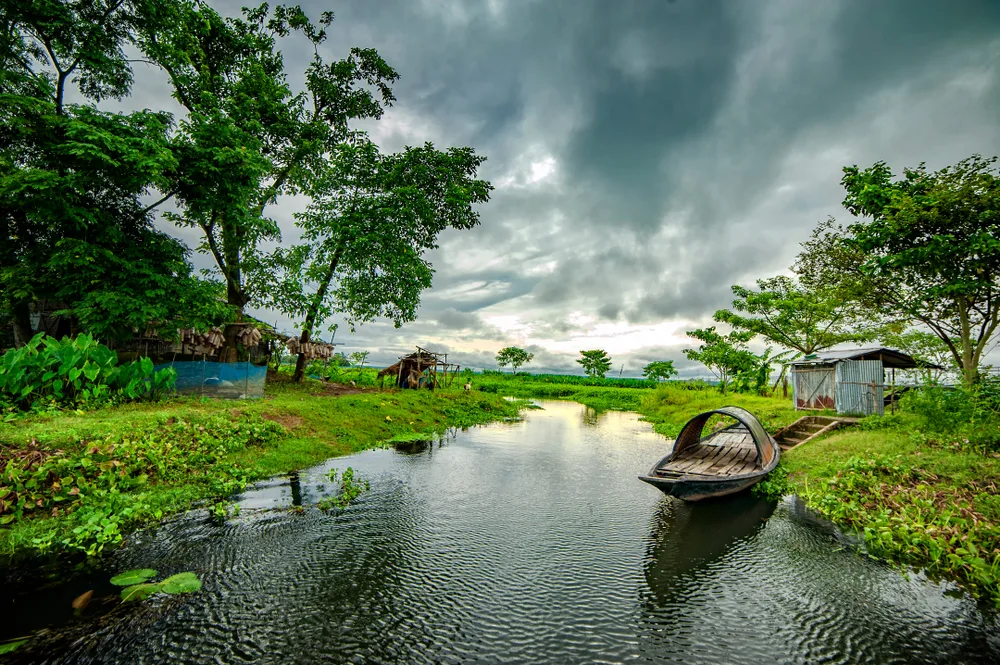
Chobi_Wala/Shutterstock
As the wettest and most humid period of the year, June through August is the worst time to visit Bangladesh. Nonstop rain and tropical cyclones make it a less-viable choice for a visit.
June is when the monsoon season really kicks off. The rain and high humidity don’t let up through August, but rainfall does taper off a little each month. You can expect to see up to 9.2″ of rain on average in Dhaka during June, but monthly totals are much higher – 16.9″ – in northeastern Sylhet near the mountains of India.
July and August are still very wet, receiving 7-16″ (July) and 5-14″ (August) across the country as the monsoon season weakens. Humidity peaks in August at around 83%.
This nonstop rain can really put a damper on your plans in Bangladesh, even in the drier areas of the country. The high temperatures around 90F with high humidity can feel unbearably hot.
Tropical cyclones and typhoons tend to occur more often during this time period, usually happening between April and December. The chance for severe weather makes it really important to follow local weather reports and have a plan in place for evacuation if necessary.
Hotel rates are on par with the high end of average for Bangladesh during this time, but are still very affordable. Here’s a look at the average hotel prices according to Google Hotels:
- June: $16-$43/night
- July: $18-$47/night
- August: $17-$45/night
With so much rain, humidity, and severe weather during this time, it’s best to skip June, July, and August and plan to visit during the dry season from November to March instead.
Things to Consider
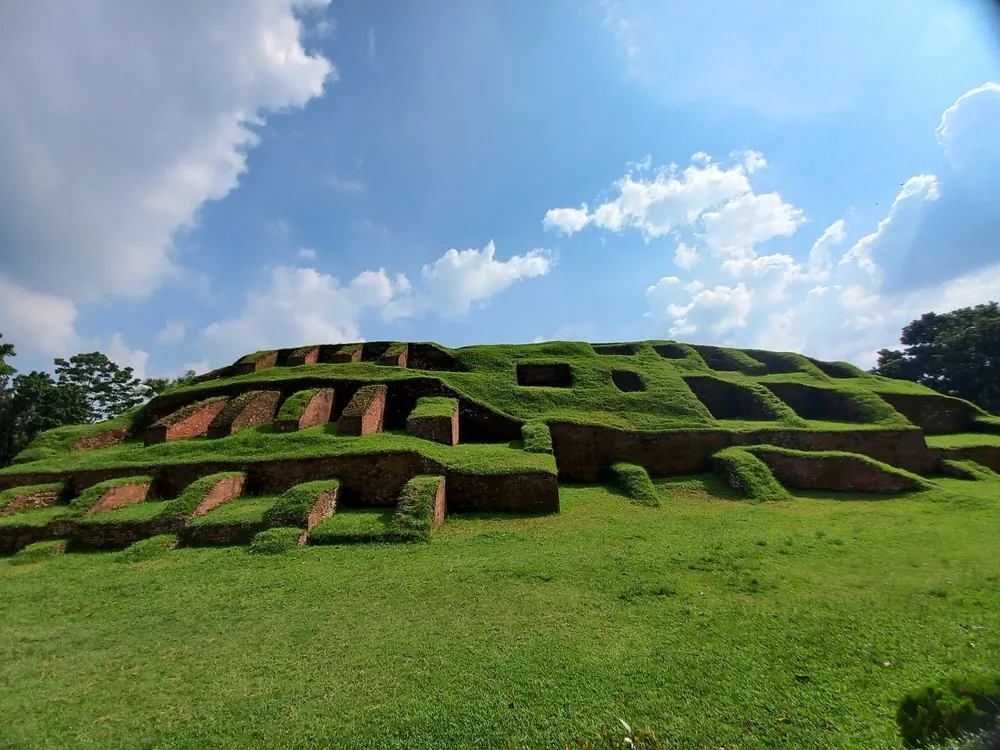
Sheikh Jahurul Islam/Shutterstock
What else should you know before you start planning a trip to lush and tropical Bangladesh? Here are some helpful travel tips to keep in mind:
- Make sure it’s safe to visit right now. Bangladesh is normally safe to visit, but the U.S. Department of State has issued a level 2 travel advisory for the country due to petty crime, kidnapping, and terrorism that may occur in the southeast. Level 2 travel advisories warn travelers to exercise increased caution, but don’t restrict travel or recommend against visiting.
- Hit the best beaches. Bangladesh has some gorgeous beaches along its southern coast. The most popular by far are Cox’s Bazar (the world’s longest natural sand beach), Saint Martin’s Island (a coral island just over 5 miles south of Cox’s Bazar), and Inani Beach (a quieter, less-crowded beach).
- Respect Islamic culture and customs. Bangladesh is primarily an Islamic country, so tourists should wear modest clothing that covers the shoulders, midriff, and knees while in public around the country. This even includes time spent at the beach or pool, where one- and two-piece swimsuits are forbidden.
- Many people speak English here. Bangladesh was colonized by the British in the mid-1700s and many people still speak English here to this day. The language is taught in schools and higher education, so when you travel here, you’ll likely have an easy time communicating with locals.
Frequently Asked Questions
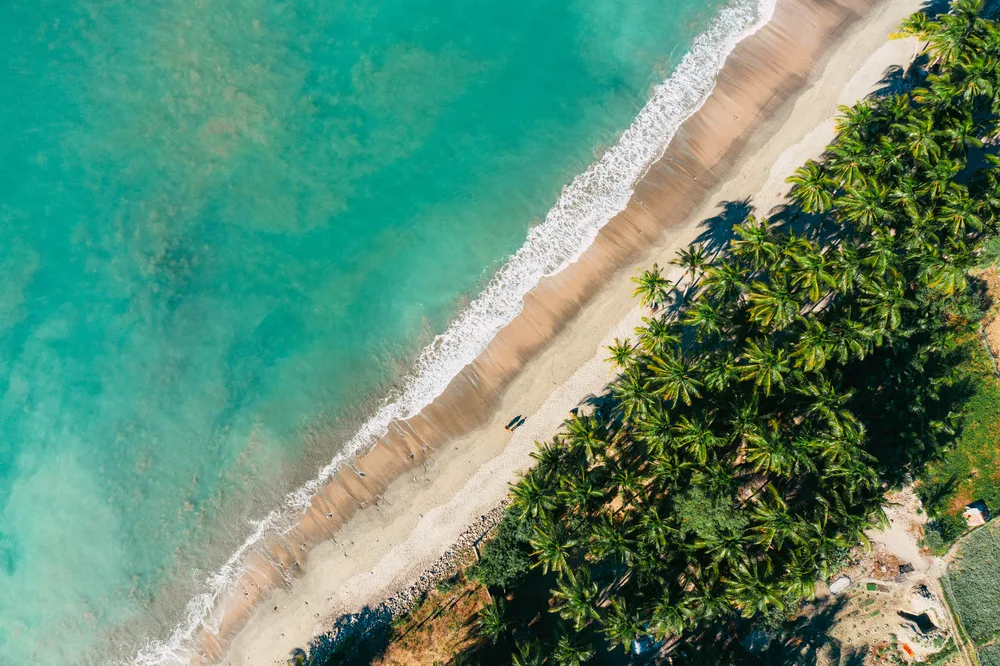
MD Rashedul Kabir/Shutterstock
Travelers considering heading to Bangladesh understandably have lots of questions. Here are the most frequently asked questions about the best time to visit Bangladesh and finding a great time of year for your visit!
When is Bangladesh's best weather?
The best time to visit Bangladesh for pleasant weather is during the winter months, from November to February, with cooler and drier conditions.
Should I avoid monsoon season in Bangladesh?
We suggest avoiding Bangladesh during the monsoon season, which occurs from June to October, due to heavy rainfall and the risk of flooding.
What's the best time to visit Bangladesh for wildlife?
Wildlife enthusiasts should visit Bangladesh during the cooler months of November to February when national parks and wildlife sanctuaries are more accessible and wildlife sightings are common.
What is shoulder season in Bangladesh?
The shoulder season in Bangladesh falls in March and October, offering a balance between weather and prices, although there may be occasional rain showers.
So, When Should You Visit Bangladesh?
Overall, you can’t beat a visit to Bangladesh between November and March. This is the dry, cooler season when you can avoid the heavy rains and take full advantage of the beautiful scenery and sightseeing opportunities here.
Keep safety top of mind when you visit Bangladesh and be sure to explore off the beaten path to discover the true beauty of this lush and colorful place.
Go to a festival, shop at street markets, book a jungle tour, and spend time on the golden beaches to make the most of your experience. No matter when you visit, you’ll find that Bangladesh is a stunning destination with endless beauty and culture to uncover!



